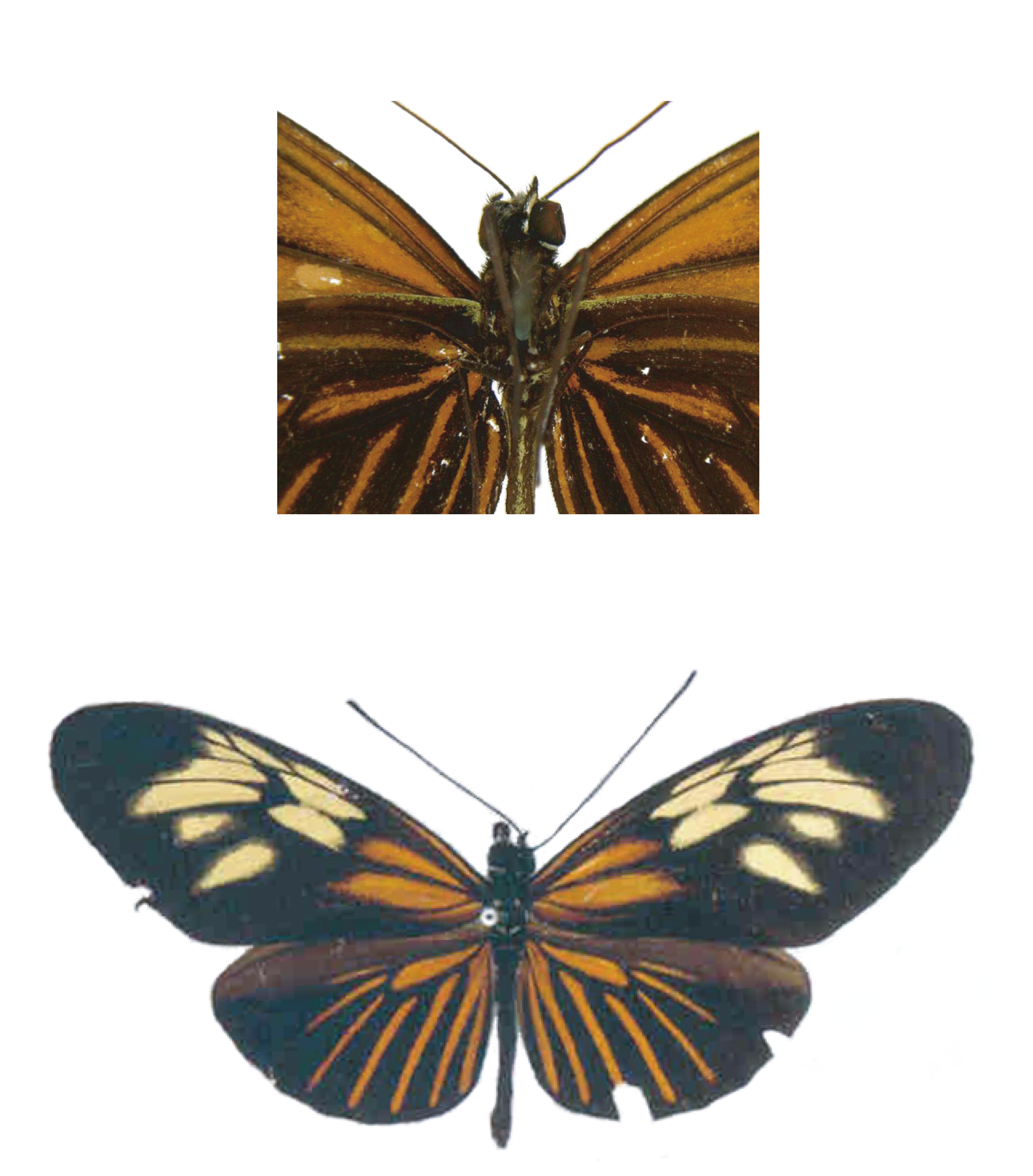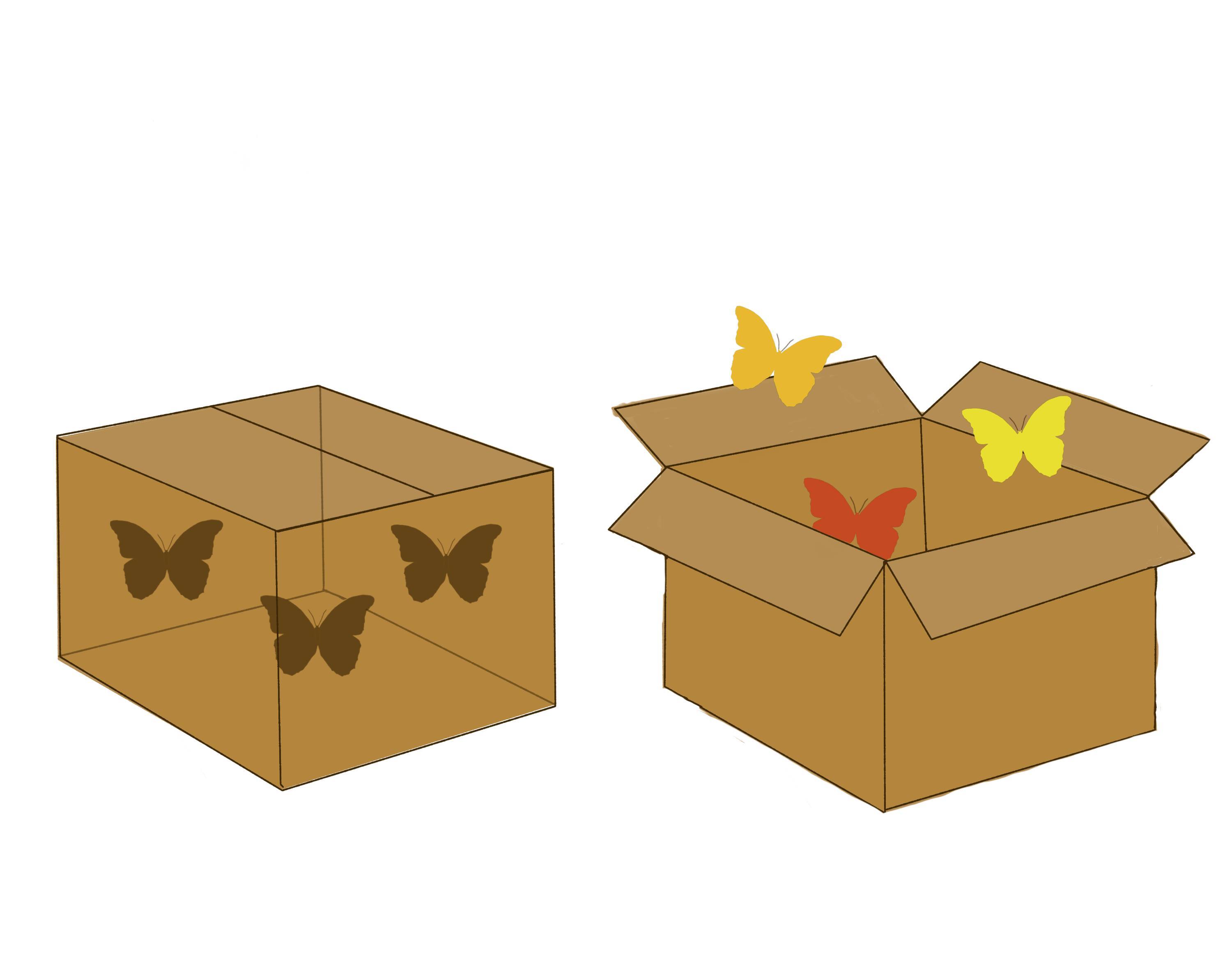Story by Pedro Ribeiro, with input from journal club participants*
A cryptic paradox
We resumed our online journal club in 2021, a space dedicated to brainstorming key ideas in evolutionary biology while updating our literature references. ☕
The year started with an interesting opinion article by Struck and colleagues (2018) [1], which argued about the evolutionary relevance of ‘cryptic species’; cryptic here does not refer to the ecological phenomenon of crypsis or camouflage, but to unnoticed species diversity. The authors did a great job putting forward four evolutionary explanations that lead to cryptic species: 1) recent speciation with little time for sister species to diverge morphologically, 2) ‘morphological stasis’ driven by low rates of morphological change across multiple species, 3) convergence and 4) parallelism, the latter two basically describing morphological resemblance among species arising independently from distinct ancestors.
A mimicry ring of blue-white-black Neotropical butterflies comprising several morphologically-similar sister species that were recently considered as one species, and large-scale convergences among unrelated butterflies. From top-down and left-right, caterpillars and adults of Perichares deceptus, Neoxeniades luda, Thracides nanea, Ectomis pervivax, Telegonus obstupefactus, Narcosius colossus, Telegonus viracocha, Telegonus audax. Photos by Daniel H. Janzen (Área de Conservación Guanacaste) under CC BY-NC-SA 3.0.
Of more interest to a broader audience, the authors also aimed to provide an evolutionary definition of what really cryptic species are. This attempt resonated the most during our journal club, mostly because of the framework built with requirements that are many times violated in the nature. For example, that cryptic species should be ‘separable and diverged genotypic clusters of individuals (reflecting reproductive isolation)’ (page 157), preferably quantified with genome-wide sequence data (page 158), and that ‘rates of morphological evolution for cryptic ingroup taxa should be substantially (statistically) reduced compared with non-cryptic taxa’ (page 155).
Is it beneficial to fulfill such requirements to simply call a species cryptic? What would happen when two clear species do not fully follow the concept of reproductive isolation? Do rates of morphological evolution should necessarily be reduced in cryptic taxa, thus, neglecting the discovery of cryptic species in fast evolving (or even adaptive) phenotypic radiations, such as cichlids in the African Great Lakes?
‘Cryptic species’ is not the opposite of adaptive radiation. For example, within the adaptive radiation of warning coloration in Heliconius butterflies, H. eratosignis has been recently raised as a separate species from the morphologically similar H. demeter. Photo by Eratosignis under CC BY-SA 4.0.
There have been simpler definitions of cryptic species, for example, the one provided by Bickford et al. (2007) [2] where ‘cryptic taxa are two or more distinct species that are erroneously classified (and hidden) under one species name’. But certainly the attempt of Struck and colleagues to provide an evolutionary definition sparked more questions about the nature of cryptic species. Are cryptic species real or do they just reflect the inability of biologists to discriminate between two or more species at a certain time?
During our discussion, we came to the idea that cryptic species are a paradox, thus, they are not biologically real. First, researchers are not looking around deliberately for cryptic species. After all, how could we know that a species is hidden within another one before having observations and data? Second, at the very act of recognizing and describing a cryptic species, this new taxon is not any more ‘cryptic’ because it becomes a fully described one with diagnosable characters (morphological, molecular, or other phenotypic traits) that should clearly tell apart one from another species. Therefore, a taxon is not yet ‘cryptic’ before its discovery nor it becomes ‘cryptic’ after its description; it simply is a species.
Although ours is (still) a non-alcoholic journal club, it made sense to us that a cryptic species is only an adjective (human construction) describing that, for a while, taxonomists were not able to detect a morphologically hidden species within another species [3].
Do not misinterpret us. We fully agree that unnoticed species diversity is a major impediment to studying and understanding biodiversity in the XXI century. The evolutionary processes that lead to multiple species resembling each other morphologically must also be investigated before it is too late (remember, we’re in the middle of a mass extinction). But attempting to provide an evolutionary definition of cryptic species, following strict rules that are often violated in the nature, might be an overburden [4].
A version of the Schrödinger’s Cryptic Species Box. Illustration by Viki Bartoňová.
Far more interesting would be the connection this concept brings between biology and physics, something we call The Schrödinger’s Cryptic Species Box. We do not know whether there are two (or more) cryptic species or only one species until we open the box. To complicate things further, this is a very subjective box because an expert taxonomist might readily recognize the cryptic species while a rookie one might not.
Cryptic species can be cryptic and non-cryptic until the box is opened – or until species are diagnosed by a taxonomist – when it can only be one or more recognizable species. Illustration by Viki Bartoňová.
As Alena said during the journal club: nature does not care. It will drift alleles apart or select some of them, but it is us that are trying to figure it out (and to name it) for our future reference. After all, don’t even get us started with the species concept…
*Regular participants in our journal club: Alena Sucháčková, Benita Laird-Hopkins, Daniel Linke, Ernesto Bonadies, Irena Klečková, Pável Matos, Pedro Ribeiro, Shuang Xing
References
[1] Struck et al. 2018. Finding evolutionary processes hidden in cryptic species. Trends in Ecology and Evolution, 33: 153-163. DOI: 10.1016/j.tree.2017.11.007.
[2] Bickford et al. 2007. Cryptic species as a window on diversity and conservation. Trends in Ecology and Evolution, 22: 148-155. DOI: 10.1016/j.tree.2006.11.004.
[3] Korshunova et al. 2017. External diversity is restrained by internal conservatism: New nudibranch mollusc contributes to the cryptic species problem. Zoologica Scripta, 46: 683-692. DOI: 10.1111/zsc.12253.
[4] Heethoff 2018. Cryptic species – Conceptual or terminological chaos? A response to Struck et al. Trends in Ecology and Evolution, 33: 310. DOI: 10.1016/j.tree.2018.02.006.



